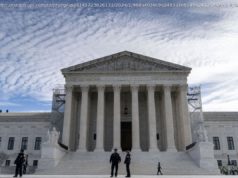Spending caps, additional work requirements for food stamps and a new natural gas pipeline are just several of the components in a deal President Biden and Speaker Kevin McCarthy reached to prevent default.
The full legislative text of Speaker Kevin McCarthy’s agreement in principle with President Biden to suspend the nation’s borrowing limit revealed new and important details about the deal, which House lawmakers are expected to vote on this week.
The centerpiece of the agreement remains a two-year suspension of the debt ceiling, which caps the total amount of money the government is allowed to borrow. Suspending that cap, which is now set at $31.4 trillion, would allow the government to keep borrowing money and pay its bills on time — as long as Congress passes the agreement before June 5, when Treasury has said the United States will run out of cash.
In exchange for suspending the limit, Republicans demanded a range of policy concessions from Mr. Biden. Chief among them are limits on the growth of federal discretionary spending over the next two years. Mr. Biden also agreed to some new work requirements for certain recipients of food stamps and the Temporary Aid for Needy Families program.
Both sides agreed to modest efforts meant to accelerate the permitting of some energy projects — and, in a surprise move, a fast track to construction for a new natural gas pipeline from West Virginia to Virginia that has been championed by Republican lawmakers and a key centrist Democrat.
Here’s what the legislation would do:Temporarily suspends the debt limit
The deal suspends the nation’s $31.4 trillion borrowing limit until Jan. 2025. Suspending the debt limit for a period of time is different than setting it at a new fixed level. It essentially gives the Treasury Department the latitude to borrow as much money as it needs to pay the nation’s bills during that time period, plus a few months after the limit is reached, as the department employs accounting maneuvers to keep up payments.
That’s different than the bill passed by House Republicans, which raised the limit by $1.5 trillion or through March 2024, whichever came first.
Under the new legislation, the debt limit will be set at whatever level it has reached when the suspension ends. For political reasons, Republicans tend to prefer suspending the debt limit rather than raising it, because it allows them to say they did not technically green-light a higher debt limit.
The suspension will kick the next potential fight over the nation’s debt load to 2025 — past the next presidential election.Caps and cuts spending
The bill cuts so-called nondefense discretionary, which includes domestic law enforcement, forest management, scientific research and more — for the 2024 fiscal year. It would limit all discretionary spending to 1 percent growth in 2025, which is effectively a budget cut, because that is projected to be slower than the rate of inflation.
The legislative text and White House officials tell different stories about how big those cuts actually are.
Some parts are clear. The proposed military spending budget would increase to $886 billion next year, which is in line with what Mr. Biden requested in his 2024 budget proposal, and rise to $895 billion in 2025. Spending on veterans’ health care, including newly approved measures to assist veterans exposed to toxic burn pits, would also be funded at the levels of Mr. Biden’s proposed budget.
Legislative text suggests nondefense discretionary outside of veterans’ programs would shrink in 2024 to about last year’s spending levels. But White House officials say a series of side deals with Republicans, including one related to funding for the Internal Revenue Service, will allow actual funding to be closer to this year’s levels.






